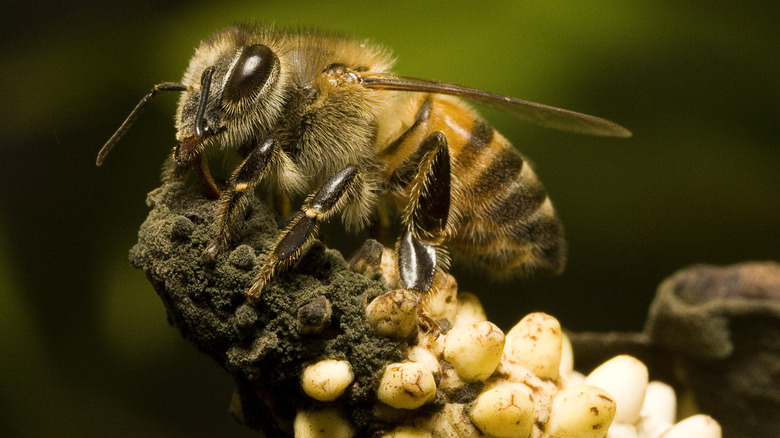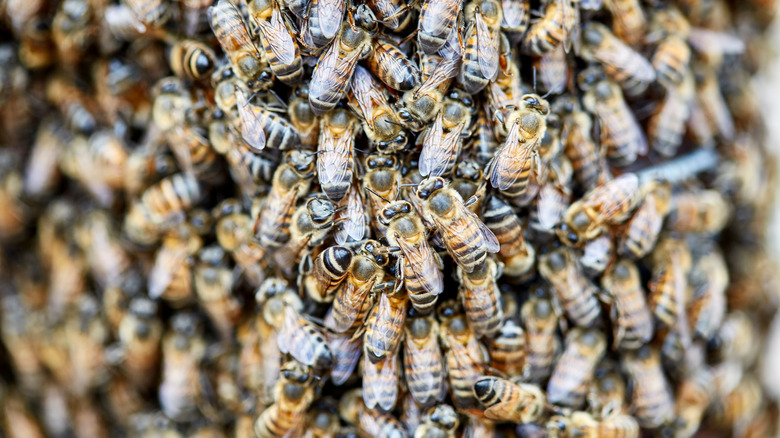This Is The Most Dangerous Bee In The World
When it comes to insects and the danger they pose to humans, bees are generally near the top of the "most dangerous" list. As reported by The Conversation, bees cause more deaths of American people per year (nearly 100) than any other animal because so many people are allergic to bee stings. In fact, several deaths attributed to a heart attack or sunstroke are probably actually severe allergic reactions to bee venom. Nevertheless, death resulting from a bee sting is relatively rare when it comes to the general public. According to the Merck Manual, the average person can withstand 10 stings for every pound of body weight, meaning the average adult could tolerate 1,000 bee stings. Of course, when it comes to the Africanized honey bee (shown above), we're dealing with a different level of danger.
Per the National Invasive Species Information Center, African honey bees were imported to South America for honey production. The bees escaped containment and mated with European honey bees, creating a hybrid Africanized honey bee called Apis mellifera scutellata. Nicknamed "killer bees," they were first spotted in the United States in 1990 and spread throughout the southwestern United States and southern California. As reported by the Smithsonian Institution, their general appearance is very similar to that of European honey bees; in order to tell them apart, a lab would have to either compare 20 different structures or analyze two specimens' DNA and enzymes to tell the two species apart.
Killer bees' stings aren't more venomous than other bee stings
According to the North Carolina Department of Agriculture and Consumer Services, the sting of the Africanized honey bee isn't any stronger than that of the European honey bee, and each bee is only able to sting once before dying. Why the "killer bee" nickname, then? First of all, Africanized honey bees are really good at displacing colonies of European honey bees. Secondly, they are much more aggressive and defensive of their nests; in one study, five times more Africanized bees than European bees left their nest during the first 30 seconds of a disturbance. Africanized bees also produce more alarm pheromones than their European counterparts, which encourages the bees to sting and contributes to colonies' aggression. Finally and perhaps most importantly, Africanized bees attack in numbers far greater than European bees, as reported by the Smithsonian Institution. Since they were brought to Brazil, they have killed over 1,000 people, with victims subjected to ten times as many stings as from European bees.
Another issue affects the honey industry as well as the general pollination of plants and trees. Interbred colonies of Africanized and European honey bees could pollinate differently than standard bees, act more aggressively in general, be more likely to abandon their nests when disturbed, and may not be able to withstand colder winter temperatures. Experts have considered flooding areas where commercially-raised queen bees mate with large numbers of European honey bees to make it less likely that European queen bees will mate with Africanized drone bees. They have also considered manually replacing queen bees often to assure that the queens are European honey bees.

